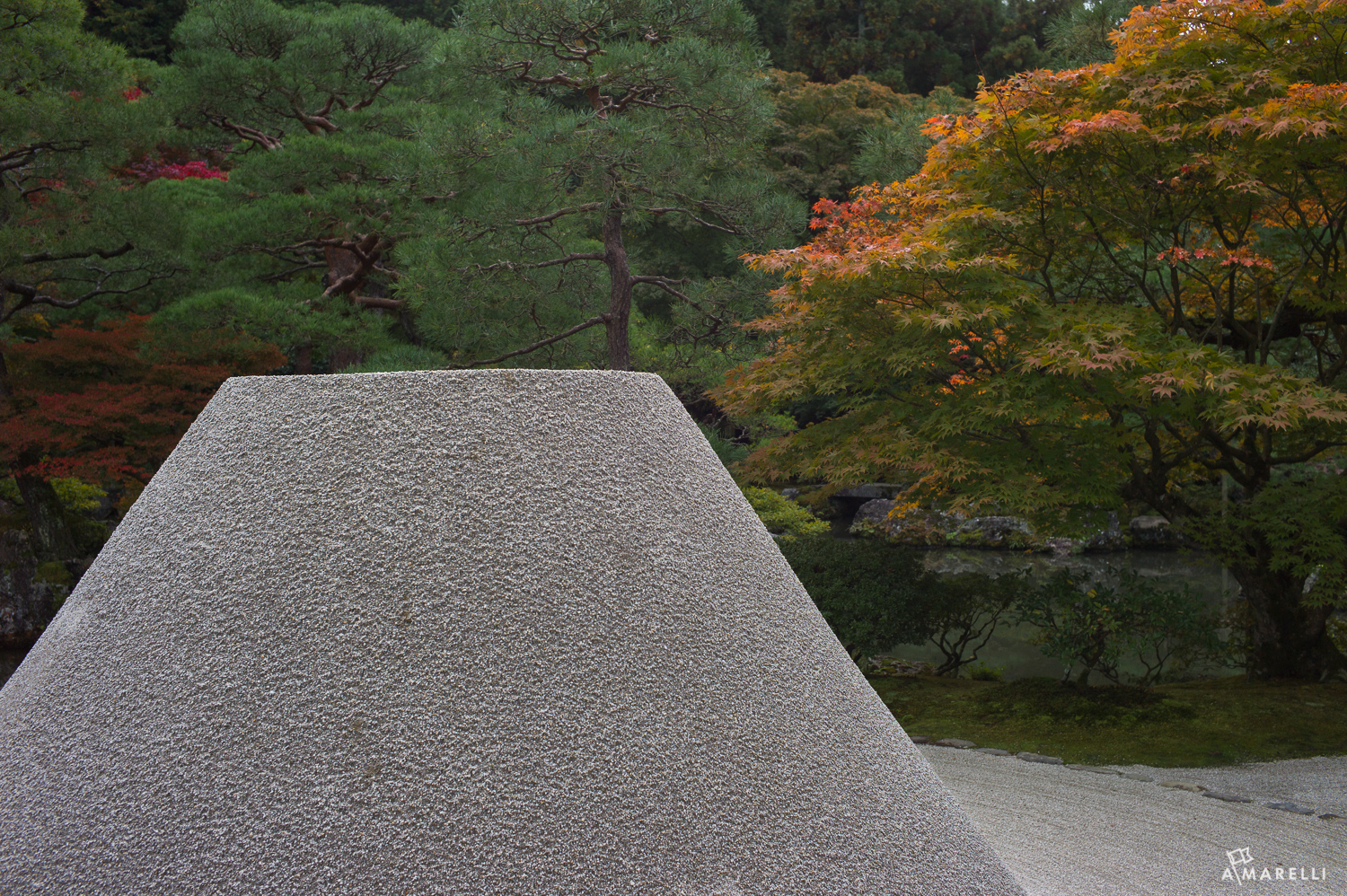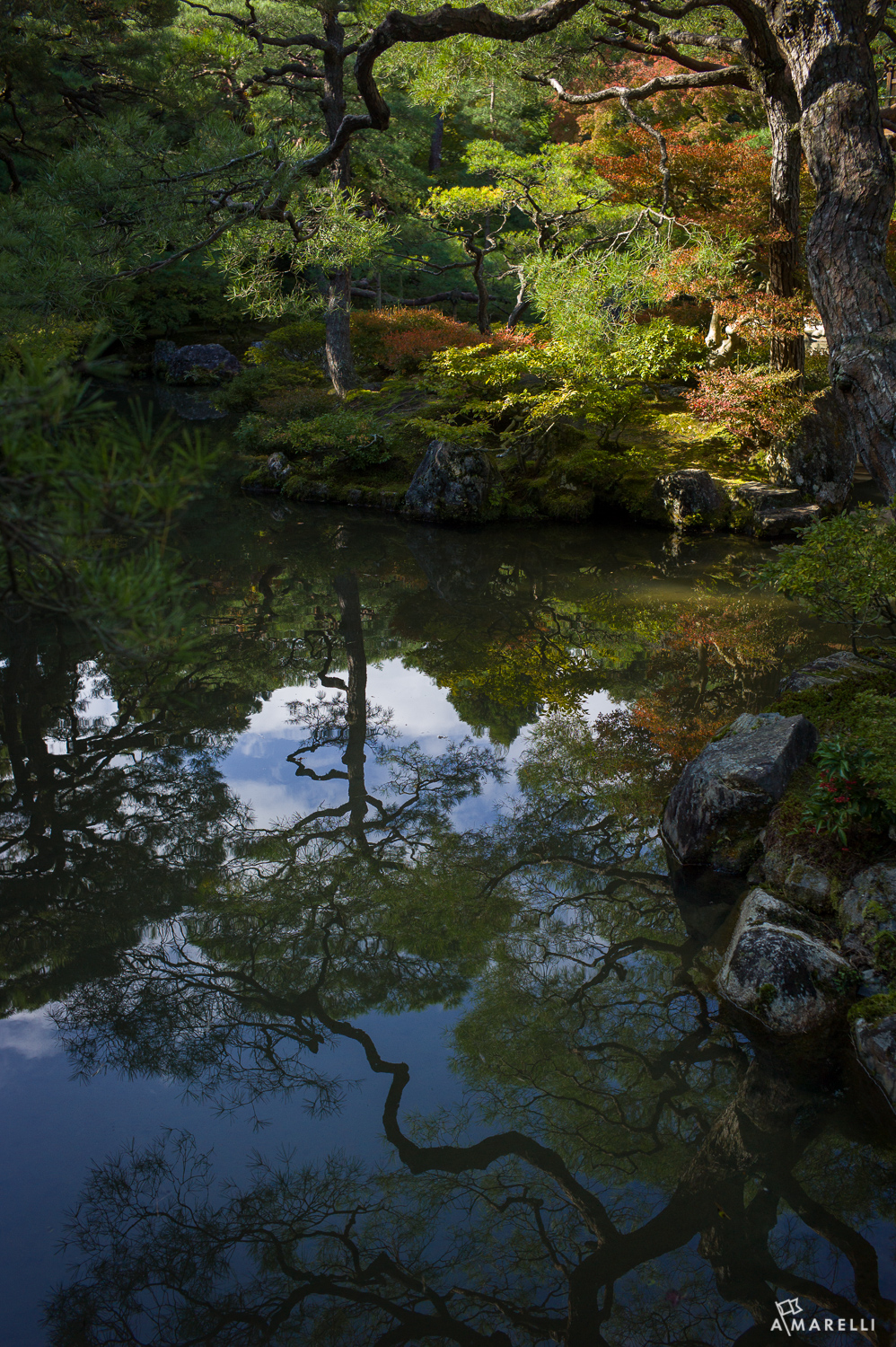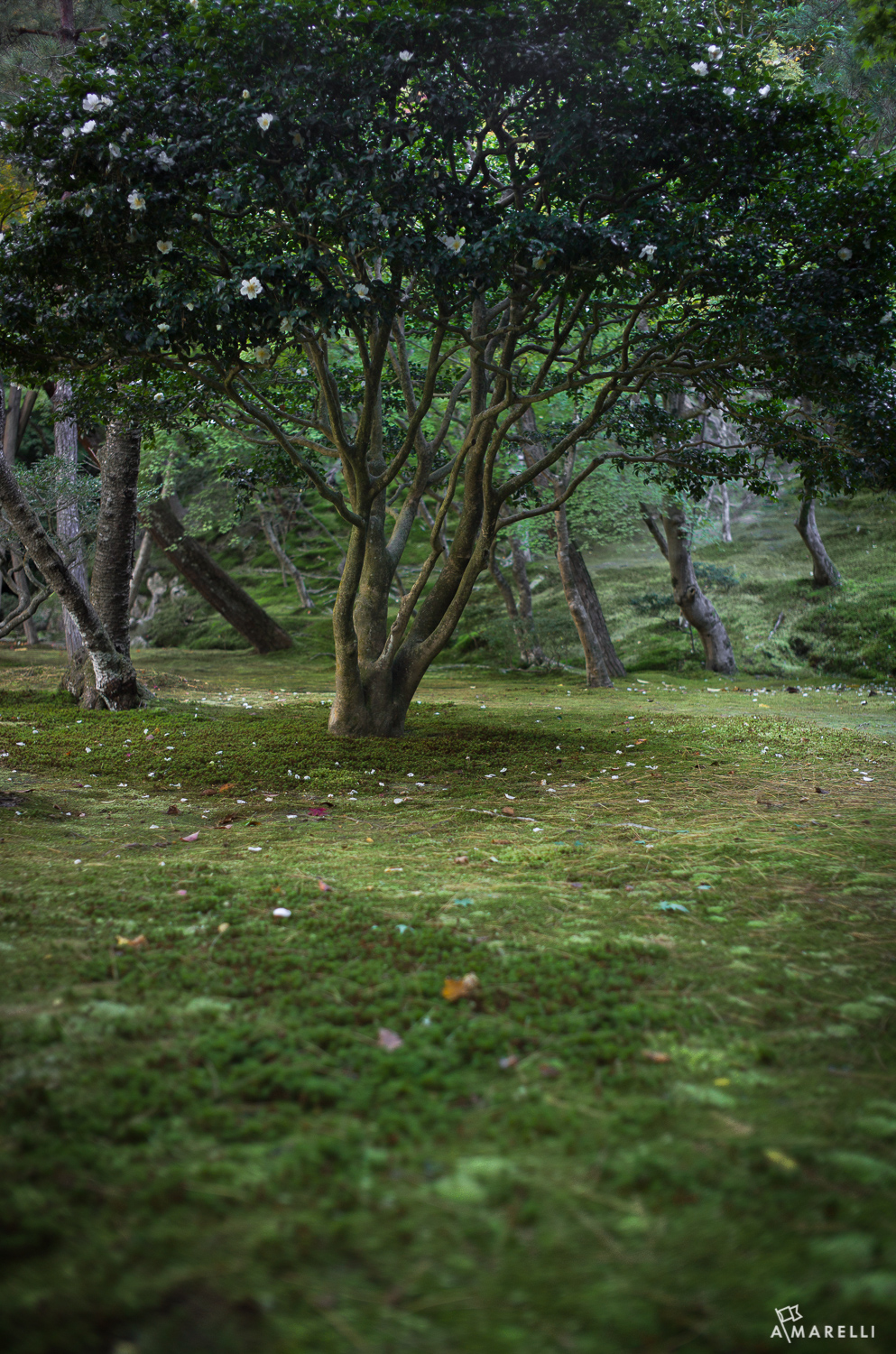
Located only a short taxi ride northeast from Kyoto’s main train station is Ginkaku-Ji, known in English as the Silver Pavilion. Many locals will tell you they prefer the Silver Pavilion to the Kinkaku-Ji (the Golden Pavilion) because it is less crowded. And when traveling, it is always best to follow the advice of the locals.
The temple’s name is a bit deceiving. While it is known as the Silver Pavilion, it is not actually silver … that nickname did not develop until the 1600s. The temple dates back to the late 1400s (construction began in 1482) when it was originally built as a retirement space for the Shogun. The rumor is that the main building was supposed to be covered in silver leaf, which is where the temple got its name. But the Shogun ran low on money at the end of his life and the silver leaf was never applied. But the name stuck and it is still known today as the Silver Pavilion.
And if one misnomer was not enough, there is another interesting feature of the temple complex. In the middle of the garden there is a moon viewing platform. While most people might expect an actual platform you can stand on, this is actually a rock and sand cone that was designed to be viewed with the moon. But this is Japan and part of the fun is that things are not always what they seem at first.
When visiting any temple it is best to arrive early. The midday crowds in Kyoto can make a peaceful temple experience feel like riding a rush hour subway. There are a number of excellent shooting opportunities, but you need a little bit of space to make it all work right. I suggest showing up right at opening, which is 9 a.m.


Inside the gates you walk through a maze of paths that weave through the buildings and surrounding moss garden. The landscape and architecture make for an excellent background for a range of photographs. Whenever you work with such a classic space, the two most obvious photographs are the ones where the people in the scene either look like actors in a movie or they stand in dramatic contrast to the setting. Either way you go, you are bound to enjoy yourself.
Temples are fascinating places because they are a convergence of a number of traditions. I’ve had the good fortune to photograph some of Japan’s temple builders, garden designers, zen monks, and the sculptors who design all of the bells and statues for temples. They each contribute a unique set of historical elements to the feel of the temple grounds. As these elements come together they create a scene that far exceeds even the best movies because the history and the objects are all real. That embedded philosophy has visual pieces that we, as photographers, can explore.
The Silver Pavilion is one of those spaces that I want to visit again. My first trip was with the Kyoto workshop in 2015. We found a lot of potential, but as with any location shoot you need time to visit again and again. I’m looking forward to another round of shooting this November.